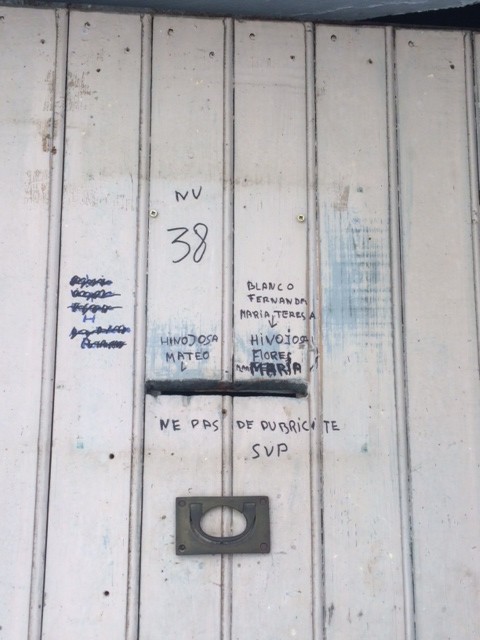Coming across this door on the edge of a medival French town was a big mystery. The scratched-out names, overwritten by the “tags” of newcomers, makes the whole plank of wood resemble a graffiti board. It’s not the kind of thing I’m used to seeing in Ille sur Têt, a fabulous medieval town where priests still deliver mass in black robes, where there is a hospice dating from 1220, old Francisican convents and Carmelite monasteries.
It’s the sharp edge of tradition, pushing uncomfortably at all the givens. Who is using a vibrant roiling black marker – like bits of barbed wire – on which to hang the change of address notice? Of the current residents, we can guess: Mateo Hinojosa, maybe sisters Fernanda Blanco and Maria Teresa Blanco? Two different hands are doing the writing. Who have they replaced? The brief stay of the previous family – families – remains in the traces.
I’d heard stories from the ’40s and ’50s of Spaniards sitting on their suitcases in the Perpignan train station waiting to be chosen for work by farm overseers. Does Europe’s new insecurity resemble the old insecurity? Who lives “chez nous”? Maybe the postman can figure it out – maybe he knows the faces. It begs the question: What does home look like?

